Hazardous Chemical Information

U.S. Hotlines
| Chemical Transportations Emergency Center (CHEMTREC) | 1-800-424-9300 |
| National Institute Of Occupational Safety And Health (NIOSH) (Technical Information Source) | 1-800-356-4674 |
| National Response Center (Report Spills, Chemical Releases, Radiological Incidents) | 1-800-848-6946 |
| Poison Control Center | 1-800-848-6946 |
| Substance Identification (Identify Chemical Substances By CAS Number Or Name) | 1-800-848-6538 |
Hazard Symbols
For recognition purposes, the hazard symbols in the catalog are from Title 49 of the Code of Federal Regulations (CFR), part 172 (DOT), yet the criteria used for assigning hazard symbols is primarily from the American National Standards Institute (ANSI) standard Z129.1 for Hazardous Industrial Chemicals Precautionary Labeling. The hazard symbols in the catalog are provided only as a guide for quick recognition of the acute hazards associated with our chemicals. They are not to be used in lieu of reading the Material Safety Data Sheet (MSDS) nor do they necessarily reflect correct DOT markings. Please refer to 49CFR for correct DOT markings.
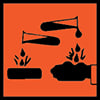 |
Corrosive: These substances destroy living tissue and equipment upon contact. Caution! Do not breathe vapors; avoid contact with skin and eyes. |
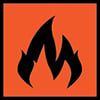 |
Flammable: Designates those items which are: a. Flammable Liquids - Caution! Flash point below 141F (60.5C). b. Flammable Solids - Caution! Keep away from open fires, sources of heat and sparks. c. Combustible Material - Caution! Flash point greater than 141F but less than 200F (or greater than 60.5C but less than 90C). Keep away from open flames, sources of heat and sparks. Note: Most combustible materials sold by Spectrum are not subject to DOT Hazardous Materials Regulations per 29CFR 173.150. |
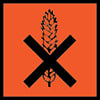 |
Keep Away From Food: Store away from foodstuffs. Toxic or poisonous materials which are hazardous to health when inhaled, swallowed or when they come in contact with the skin. May even lead to death. Danger! Avoid contact with the human body and immediately consult a physician in case of contact. |
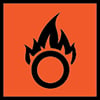 |
Oxidizer: Oxidizing substances can ignite flammable and combustible material or worsen existing fire and thus make fire fighting more difficult. Caution! Keep away from flammable, combustible and spontaneously combustible materials. |
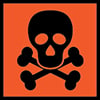 |
Poisonous Substances: Very hazardous to health when inhaled, swallowed or when they come in contact with the skin. May even lead to death. Danger! Avoid contact with the human body and immediately contact a physician in case of contact. |
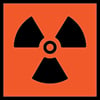 |
Radioactive: This symbol designates those substances which have measurable radioactivity. Caution! Avoid exposure. |
HMIS Information
The Hazardous Materials Identification System (HMIS) was developed by the National Paint and Coating Association to be a visual system using colors and numbers to communicate risk information. It was designed to be as compatible as possible with hazard communication systems such as ANSI, NIOSH and others used by industry.
The information is communicated through a numerical rating for Health, Flammability and Reactivity. The numerical ratings range from 0 to 4: a rating of "0" represents little or no hazard potential, while a "4" rating indicates an extremely high degree of hazard potential. Where possible, we have made every effort to include the HMIS values for each catalog entry and we believe them to be accurate at the time of printing. For more details regarding the HMIS, please contact the NPCA. We also offer a Hazard Identification System wall chart.
Spill Cleanup Kit Icons
A principal element of good laboratory safety practice is to have spill kits close at hand for the cleanup of hazardous materials. To make ordering the appropriate spill kits easier, we have included icons to identify which spill kits are appropriate for specific chemicals.
Key to National Fire Protection Association 704 Ratings Icons
The N.F.P.A. warning diamond is shown for many of the items in this catalog. This widely used information system clearly defines Health, Fire and Reactivity hazards as well as some specific product hazards. Numbers in the diamond range designate (from 4 for the greatest to 0 for the least) degree of hazard. The letter "U" indicates unknown danger. We chose to indicate only the water reactive (W) special hazard because it supplements the hazard information already identified.
IMPORTANT: The absence of an NFPA number or warning should not be interpreted as an indication of safety. NFPA information is not available for many items in this catalog!

